Canoeing and Kayaking in Finland
Canoeing and kayaking are excellent ways to explore Finland, the land of thousands of lakes. Paddlers are bound to experience breathtaking scenery and natural silence, view mysterious rock art, see wildlife and perhaps even catch a glimpse of rarely encountered species, like the Saimaa ringed seal.
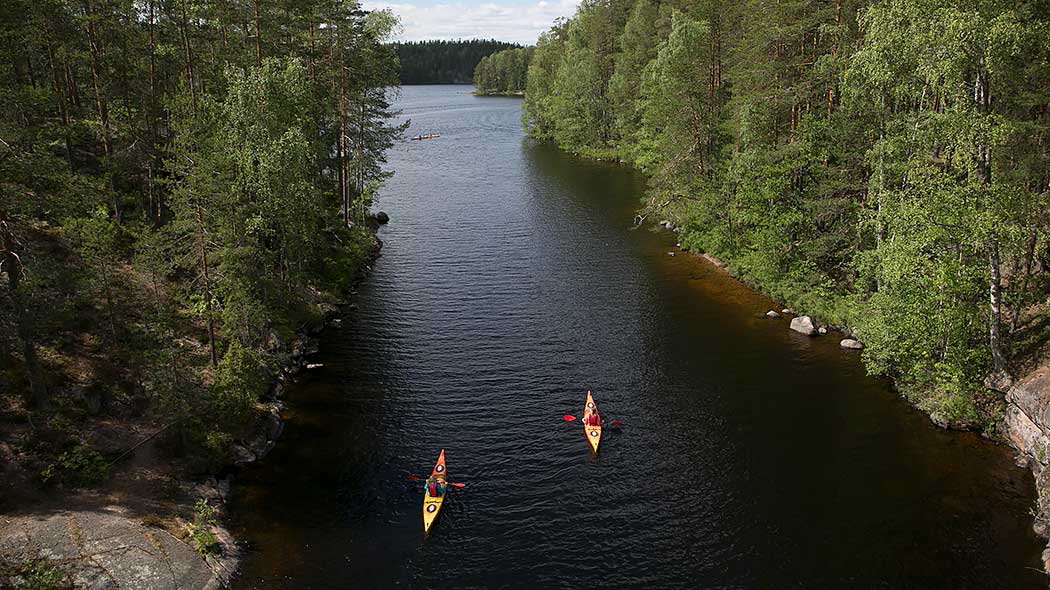
Everyone will find a destination that matches their level of skill. For beginners, the best environment to learn is a quiet inland lake or a slow flowing river on a calm day. As you progress, you can take your canoe or kayak to the faster flowing rivers or even to the Baltic Sea on a windy day. Vast water bodies and numerous islands in Lake Saimaa and the Baltic Sea with their stunningly beautiful landscape allow you to canoe for hours, days, or even weeks. Those seeking for adventure will find fast-flowing rapids in Northern Finland.
Take advantage of maintained picnic sites with fireplaces and dry toilets for breaks and overnight canoeing trips. They are often found within and near National Parks. Many municipalities and recreational associations offer services for paddlers, too.
How to get started
Many National Parks in Finland offer good canoeing and kayaking opportunities. In fact, some National Parks in The Lake District or in The Archipelagos are best explored by canoe, kayak or boat, as access by land can be limited. Use Search on Map to find various paddling destinations across Finland. Check the National Park website or the local Visitor Center for information on canoeing routes and gear rental. Excursionmap.fi is a good source of information, too.
Generally, the best time for paddling is June-September. In the summer months, waters tend to be warmed up after long winter and streams in rivers have slowed down after the meltwater flooding. Lakes and rivers of Southern Finland are usually ice-free from April-May through October. In Northern Finland, the paddling season is typically from June to September.
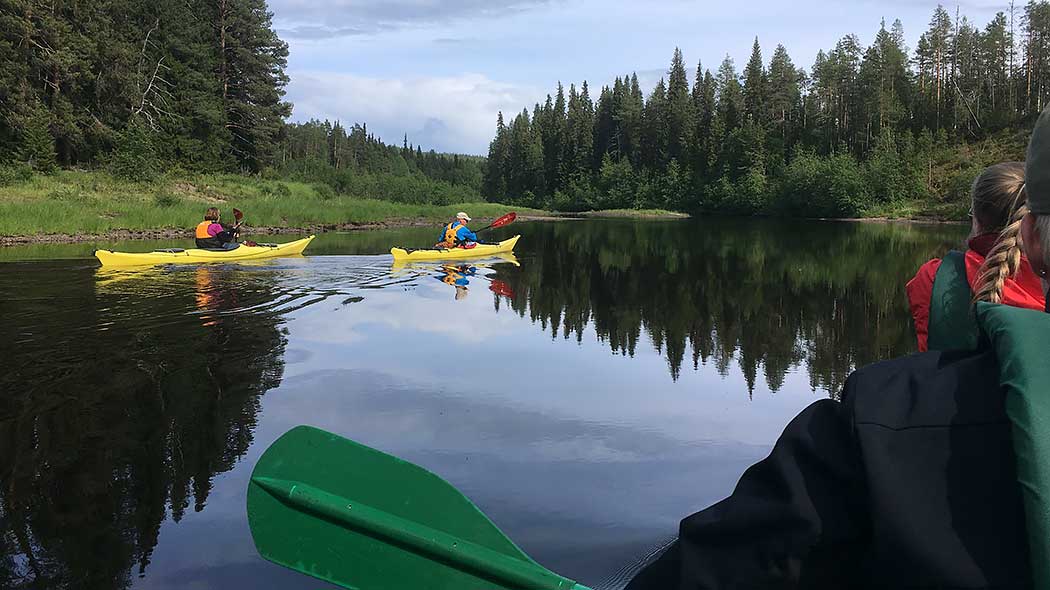
Canoe/kayak rentals and guided paddling trips are offered by several outdoor service providers in and near Finland’s national parks. Each National Park has a variety of authorized partners which offer activities and outdoor services in the area. We recommend using authorized Parks & Wildlife Finland partners, who are committed to the principles of sustainable nature tourism. Depending on selection, they rent out single kayaks, double kayaks, open canoes and other crafts that move on water, such as stand-up paddle boards and rowing boats. You can start your paddling adventure from the rental location or ask for transportation (usually for a fee). Paddling one-way without returning the rental equipment to the starting location can often be arranged. Just ask!
Besides canoeing or kayaking, there is a wide selection of other water-related activities. The experienced and adventurous can try river-rafting in some locations. Ask for guided river-rafting excursions; it makes for an unforgettable experience for the entire family! Stand Up Paddle boarding, SUP, has become very popular in Finland in recent years, so SUP board rentals are widely available, even in natural places close to Helsinki.
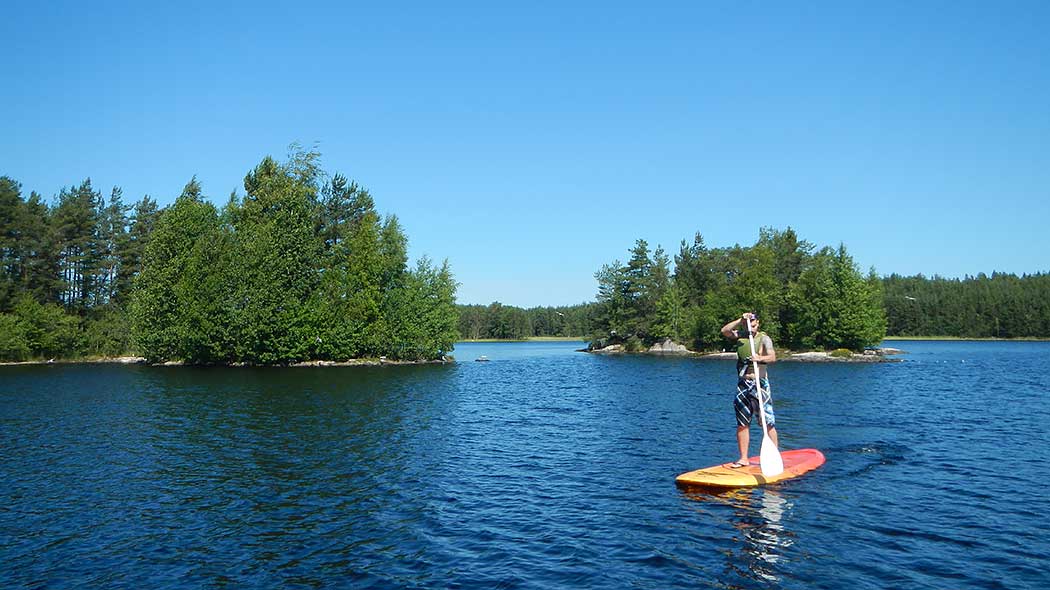
Good to know
Canoeing suits everyone who can swim. Even an experienced paddler wears a personal flotation device (also known as a life jacket, life vest, PFD) since it assists a wearer to stay afloat in water in the event of man overboard.
When paddling for a longer distance, planning is important. When planning a route, consider these:
- Is your route easy to follow and navigate?
- Are you going to stay close to the shoreline and be better protected from wind and waves? If you travel further from shore, you are prone to wind and waves
- Are there designated campfire sites and tent sites for breaks and overnight stays along the route?
- Is the selected route within the canoeing skills of everyone in the party?
Marked canoe routes are not common and islands or lakeshores are not signposted. Therefore, a map, compass and the ability to use them are essential. Planning a route on the map is easy but the landscape can look very different from the canoe making navigation challenging. Therefore, it is a good idea to carry a detailed topographic map or nautical chart to assist with navigation. A road map with the general outline of lakes is not adequate. There are detailed maps for water touring for some marine National Parks and other destinations. They are excellent for route planning but usually not for navigation. Relying on a navigation app only is never a good idea, since your device may run out of battery or get wet.
No permit is required for any canoeing or kayaking trips. However, groups of 10 or more are asked to notify Metsähallitus in advance when going camping.
Familiarize yourself with Everyman's right, i.e. the responsibilities and rights you have when moving about in Finnish nature. They apply to both Finnish and foreign citizens.
- Essentials: appropriate clothing, extra warm clothing, food and drink, map and compass, hat/cap, matches and headlamp. Keep everything in a waterproof bag. Life jacket is a must, as well as a canoeing whistle.
- Additional things to have: sun screen, bug spray, towel, bathing suit, water shoes, rope and snacks.
- Note! Life jackets, paddles, map and sometimes even dry bags are often included when renting a canoe from a responsible outdoor company.
Pack your food, drink and other supplies in washable and reusable containers to prevent waste. There is no garbage collection so take away all your litter. Be smart and pack everything in water-proof bags.
If your canoeing experience is limited, consider taking a guided paddling trip with one of the outdoor service providers in the area. Every National Park that has water recreation opportunities has a selection of outdoor companies that offer canoeing or kayaking tours. You will find the list of guides on National Park website.
Safety
Summer weather in Finland can be unpredictable. Therefore, keep checking the weather forecast. Seek for shelter if the weather gets worse. Daylight hours are plentiful in the summer, but nights can be cold.
Paddling alone is not recommended. Leave word about where you are going, by what route, and when you plan to return.
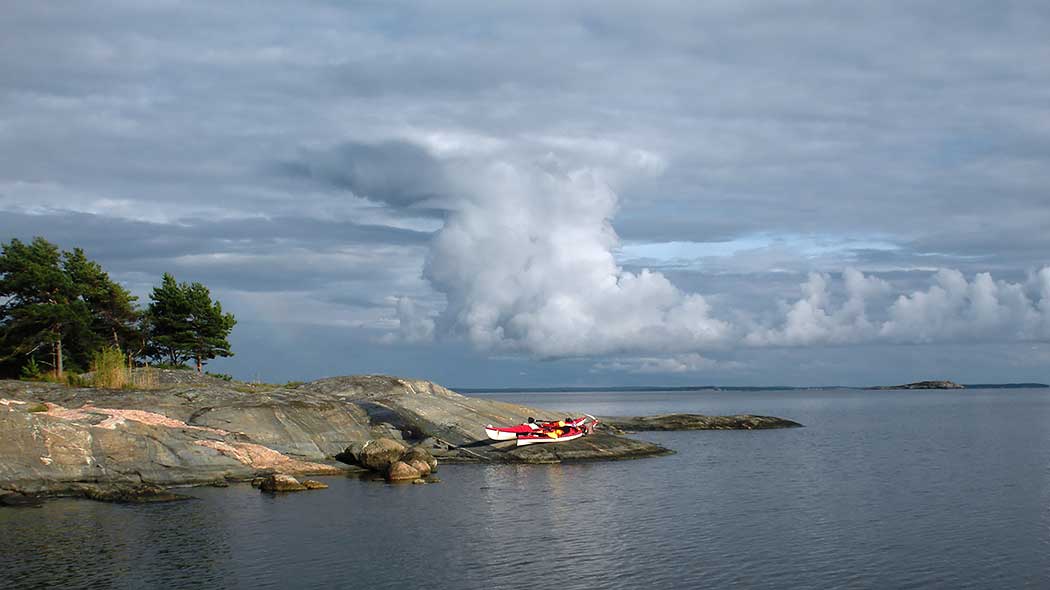
Be visible and avoid official waterways. Keep in mind, that a small canoe may not be easy to spot from a bigger vessel, such as a cargo ship, passenger ship or even a motor boat. Keep away from waterways meant for other boat traffic.
Drink enough water. You may use the water from springs, lakes or wells. Water from springs and wells is usually clean and safe to drink but lake water may contain harmful algae or bacteria from animal droppings. Therefore, always boil lake water before drinking. Using water from natural sources is always at your own risk.
Watch out for slippery rocks when landing. Water shoes with rubber outsoles offer a good grip on wet surfaces like slippery rocks.
Carry a fully charged mobile phone and keep it in a waterproof bag. Keep in mind that cell phone coverage can be limited in some areas, such as rocky canyons and hilly terrain. Emergency number in Finland is 112.
Do not attempt rapids or rivers beyond your ability. No matter your skill level, it's important to use good judgement and preventive measures to stay safe.
Water Ways Etiquette
Familiarize yourself with waterway rules. Generally, paddle like you never have the right of way. Big boats often can’t see canoes or kayaks, so self-preservation is important.
Be considerate to others. You can take a break onshore as long as you follow these rules:
- Don’t land on someone’s private beach/ land, especially near private houses and summer cottages. How do you know it’s private? If you see any residential buildings near the water, it probably is. Keep at least 50 meters distance and let other people enjoy their vacation time.
- When possible, use designated picnic sites for breaks. Plan your canoeing route so that you can take advantage of them. Designated campsites of Metsähallitus are usually signposted and marked on a map. They should also, depending on vegetation, be visibly signposted to paddlers on water.
- Do not disturb breeding birds, their nests or young and stay away from restricted areas, islands, islets and lakeshores especially during the most crucial breeding time, 15.4.-31.7. (Note, that dates can vary depending on species and province.) No landing means also no approaching. Let birds nest in peace !
- Other areas of no-landing include military training grounds. They are marked on a map and usually very visibly signposted on terrain.
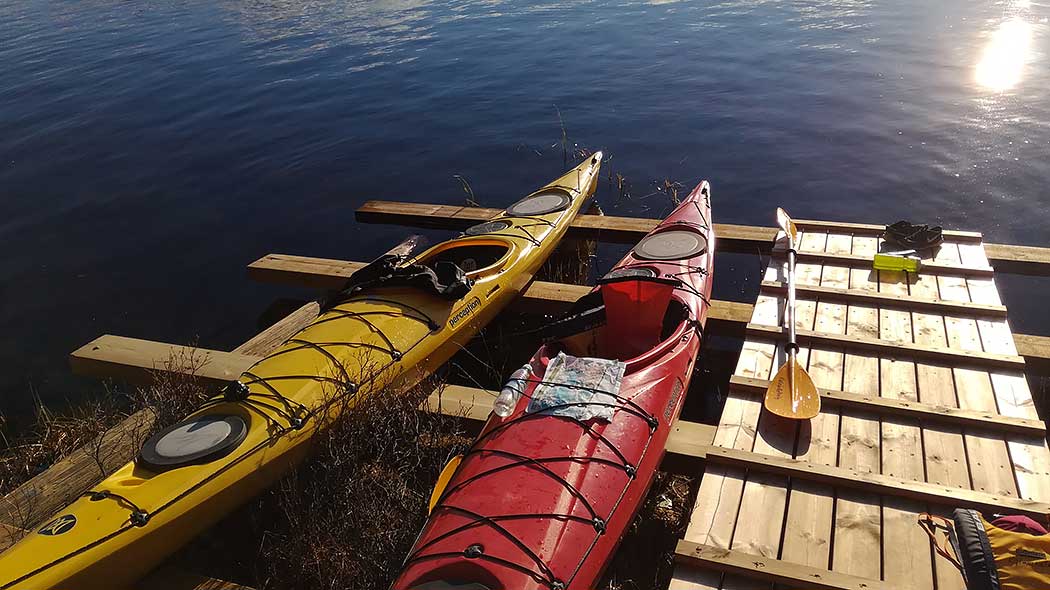
Read also:
Recommended destinations for canoeing and kayaking
Enjoy the tranquility of an inland lake
Explore the maze of islands and islets of the Baltic Sea
Paddle on a slowly flowing water trail
Experience the speed of white water rafting
Pallas-Yllästunturi National Park
The River Ivalojoki in Hammastunturi Wilderness Area
